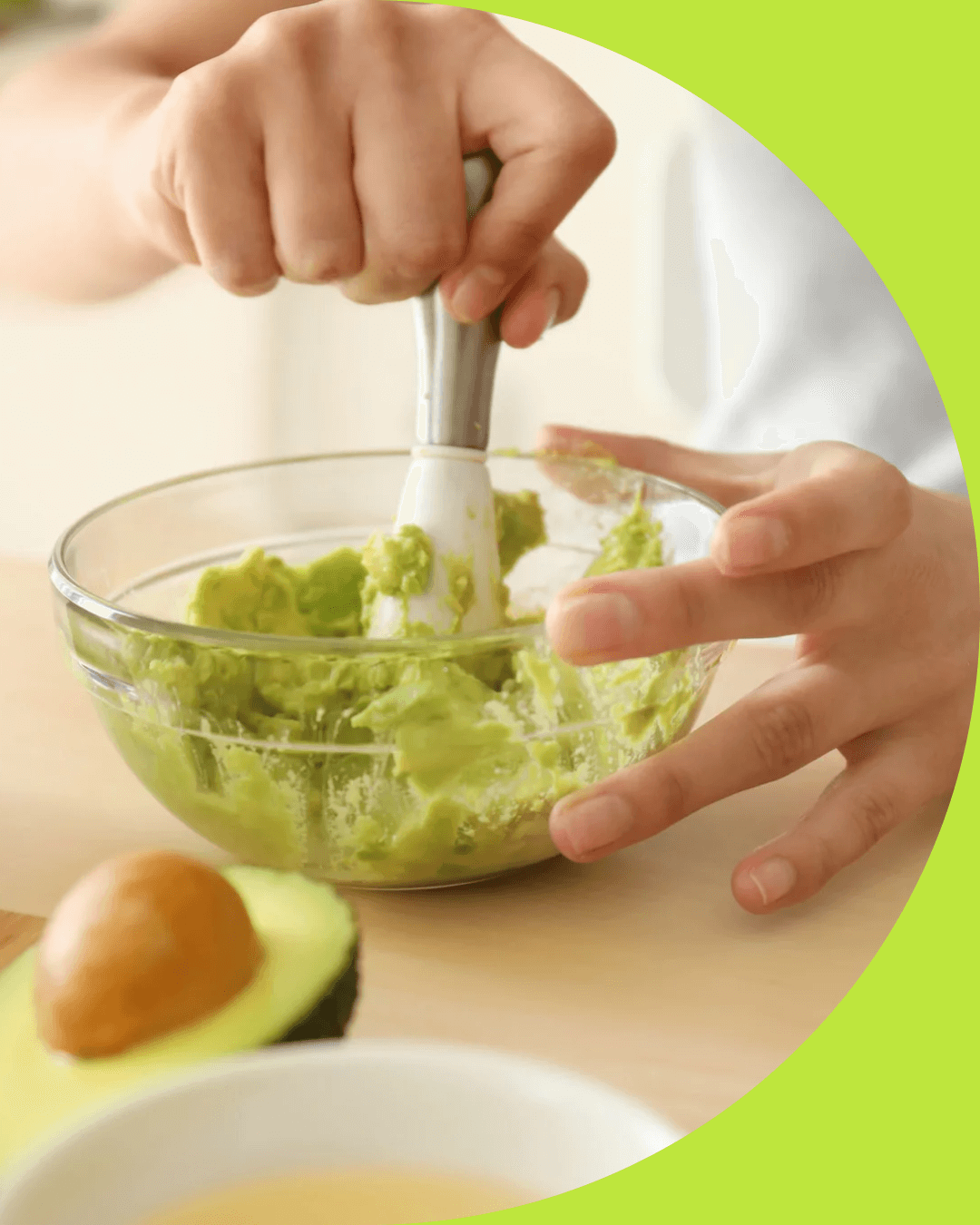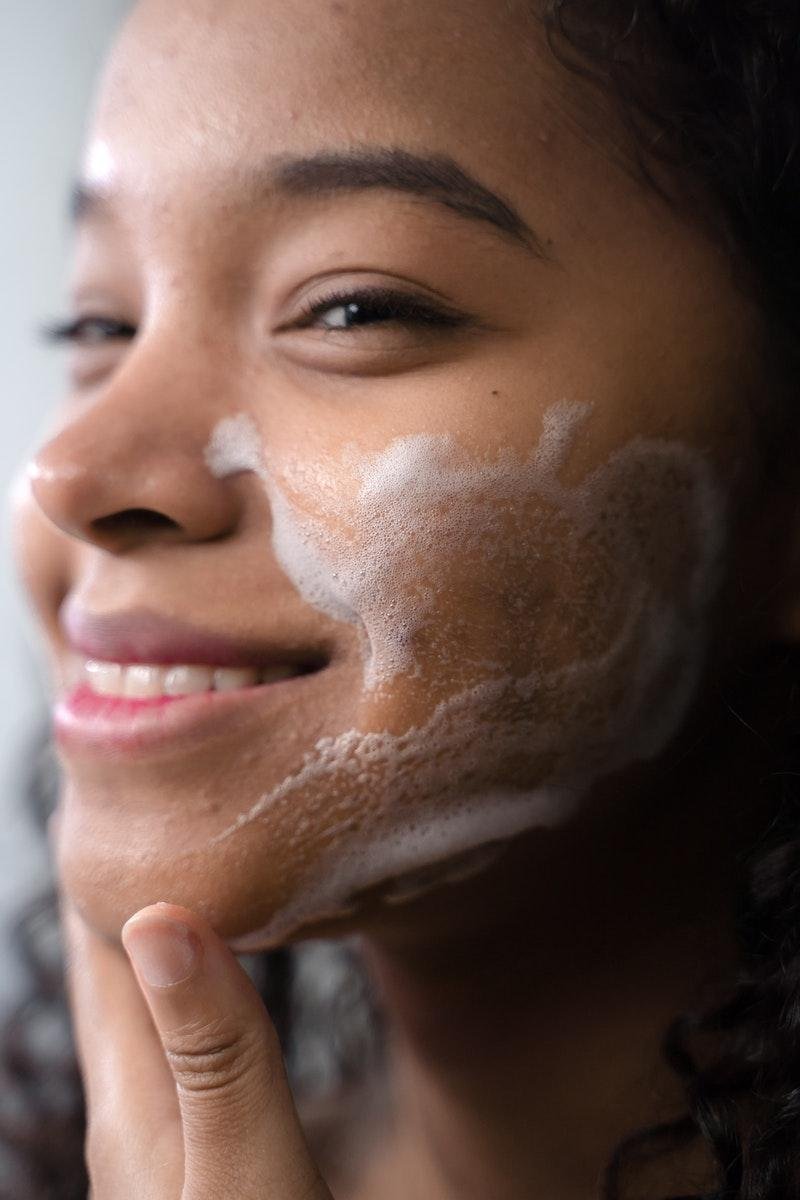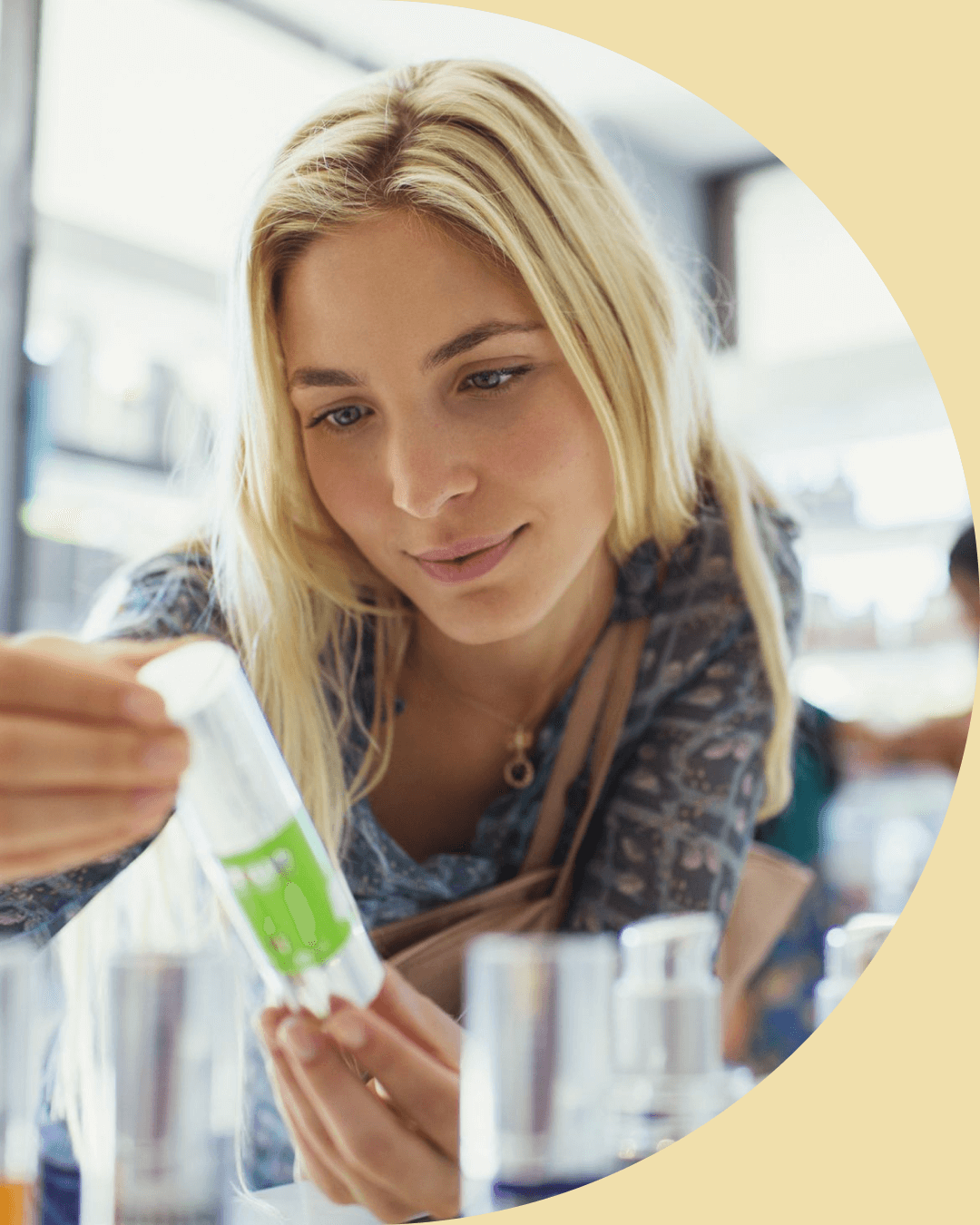Achieving flawless skin can be challenging, especially when trying new skincare products. It’s frustrating to spend money on a new product only to have your skin break out immediately. Sometimes, this is due to your skin not agreeing with a product or ingredient, but other times it’s a natural process called purging. Don’t worry; purging doesn’t mean the products are ineffective. It’s a phase where certain ingredients push irritants out of your skin, initially causing what seems like breakouts but eventually revealing smoother and clearer skin. In this article, we’ll explore purging in skincare, understanding its causes and characteristics, and learn how to differentiate it from regular acne or closed comedones to help you navigate towards a brighter and more beautiful complexion.
What is Purging?
In skincare, purging is a temporary skin reaction that occurs after introducing a new skincare product with active ingredients into your skincare routine.
These ingredients speed up the skin’s natural renewal process, which pushes irritants to the surface and causes a temporary increase in the appearance of blemishes.
Why Does Purging Happen?
Purging occurs when certain active ingredients are introduced into your skincare routine. These ingredients, which include chemical exfoliants, retinoids, and vitamin C, accelerate the skin’s natural exfoliation process. This helps shed dead skin cells and promotes the growth of newer, healthier cells.
When incorporating a new product with active ingredients into your skincare routine, your skin requires an adjustment period. As the product begins to take effect, it works to unclog pores and initiate a deep cleansing process.
During this process, irritants and pollutants that were trapped beneath the skin are pushed up and out. Under normal circumstances, the skin’s natural cell turnover occurs gradually, taking several weeks for new cells to rise from the deeper layers to the surface. However, when using these active ingredients, this process is accelerated, significantly reducing the time it takes for blemishes and impurities to come to head.
Essentially, purging is the potential acne that already exists under your skin, but active ingredients expedite the process, giving the appearance of a temporary worsening of the skin.
How Long Does Purging Last?
The good news is that purging is temporary, but the bad news is that it may last for up to 6 weeks.
The duration of the purging process varies from person to person, depending on their skin type and condition prior to introducing the active ingredient into their skincare routine. If you are prone to frequent blemishes or have pre-existing skin conditions, the purging phase may last longer or be more pronounced compared to someone with naturally balanced skin.
While enduring the purging period, it’s crucial to remain patient and consistent with your skincare regimen. However, if the purging extends beyond the 6-week mark or becomes excessively severe and unbearable, discontinue using the product with the active ingredient and seek guidance from a dermatologist or skincare professional.
Remember that purging is a sign that the active ingredients are working to improve your skin’s health and appearance in the long run. Once the purging phase subsides, you should start to see clearer, healthier, and more radiant skin.
What Does Purging Look Like?
At first, purging may look like a typical breakout, but there are some key differences to its appearance.
Increased Blemishes: You may notice a sudden increase in the number of blemishes, including whiteheads, blackheads, pustules, or papules. These blemishes are often clustered in areas where you typically experience breakouts.
Small, Uniform Bumps: Purging blemishes tend to appear as small, uniform bumps on the skin’s surface. They may not be as inflamed or red as typical acne breakouts.
Shorter Lifespan: Blemishes that occur during purging may resolve more quickly than regular breakouts. They may come and go within a few days or weeks.
Limited to Certain Areas: Purging typically occurs in specific areas of the face or body, where you commonly experience acne or congestion.
Improved Skin Texture: As purging progresses, you may notice an overall improvement in the skin’s texture and tone. This shows that the active ingredients are working.
Is Your New Skincare Product Making You Purge?
If you’ve recently incorporated a new skincare product into your routine and notice the emergence of blemishes, it’s natural to wonder whether the product is the cause. Differentiating between purging, acne, and closed comedones can help you identify the root of the issue and make informed skincare decisions.
Purging
Purging is a temporary skin reaction resulting from products containing active ingredients that increase cell turnover or promote exfoliation. It accelerates the shedding of dead skin cells, bringing underlying impurities to the surface and causing an apparent increase in blemishes.
Location: Purging typically occurs in areas prone to breakouts or congestion, where your skin commonly experiences issues.
Appearance: Purging presents as small, uniform bumps that may not be as inflamed or red as typical acne breakouts.
Duration: The purging phase is relatively short, usually lasting around 4 to 6 weeks. As the purging subsides, you should observe an improvement in your skin’s texture and overall appearance.
Acne Breakouts
Acne (such as acne vulgaris) is a common skin condition characterized by the formation of comedones (blackheads and whiteheads), papules, pustules, and cysts. It can result from various triggers, including hormonal changes, fungus or bacteria, inflammation, and excess oil production.
Location: Acne can occur in various areas of the face and body, depending on the type and underlying causes.
Appearance: Acne lesions can appear inflamed, red, and painful, with a variety of forms and sizes.
Duration: Acne can persist for more extended periods, and new blemishes may continue to emerge without a specific timeline.
Closed Comedones
Closed comedones, also known as “clogged pores,” are non-inflamed bumps caused by the accumulation of dead skin cells and sebum within hair follicles. They can develop when using products that may be too heavy for your skin type or contain comedogenic ingredients.
Location: Closed comedones can appear anywhere on the face after introducing a new product.
Appearance: Closed comedones typically appear as small, flesh-colored or slightly raised bumps on the skin’s surface.
Duration: Closed comedones can persist for more extended periods and may not resolve on their own without proper treatment and stopping the use of the product.
Purging and Skincare Ingredients
If you’ve recently introduced a new skincare product or ingredient into your regular routine and you notice new blemishes, it’s important to look at the ingredients to see whether it’s purging, possibly unrelated, or due to a potentially comedogenic ingredient.
Here, we separate common skincare ingredients by those that can cause purging, ingredients that are well-tolerated, and ingredients that are considered comedogenic and can clog pores.
Skincare Ingredients that May Cause Purging
Purging occurs when your skin’s natural exfoliation and renewal process is sped up, through the introduction of certain active ingredients.
These are the most common skincare ingredients that increase skin cell turnover, which may cause purging.
- Chemical exfoliants including AHAs (glycolic and lactic acid) & BHAs (salicylic acid)
- Exfoliating enzymes
- Retinoids such as OTC retinol, tretinoin, and oral isotretinoin (Accutane)
- Vitamin C
- Tea tree oil
- Benzoyl peroxide
- Azelaic acid
Skincare Ingredients that Don’t Cause Purging
These common skincare ingredients are generally well-tolerated, non-comedogenic, and don’t cause purging. If you experience breakouts with these ingredients, it could be due to an intolerance or allergy in your skin or unrelated to the product’s list.
- Hyaluronic acid
- Glycerin
- Ceramides
- Niacinamide
- Squalane
- Green tea extract
- Jojoba oil
- Rosehip oil
Common Skincare Ingredients that Clog Pores
These common skincare ingredients are known to be comedogenic, but don’t cause purging. Some people might be able to tolerate them in certain products, but if you begin to break out after using one of these ingredients it’s probably clogged pores and not an irritation or purging.
Coconut Oil: Although praised for its moisturizing properties, coconut oil is highly comedogenic and can clog pores, particularly for individuals with oily or acne-prone skin.
Cocoa Butter: Similar to coconut oil, cocoa butter is rich and heavy, making it likely to clog pores and contribute to acne issues, especially in areas prone to congestion.
Algae Extract: Certain types of algae extract have a higher comedogenic rating, posing potential problems for those with sensitive or acne-prone skin.
Wheat Germ Oil: With a high comedogenic rating, wheat germ oil can aggravate acne-prone skin and exacerbate breakouts.
Isopropyl Myristate: Found in many cosmetics and skincare products, this synthetic oil is known to clog pores and contribute to acne breakouts.
Lanolin: Derived from sheep’s wool, lanolin is a common moisturizer ingredient but has a moderate to high comedogenic rating, potentially leading to pore blockage.
Shea Butter: While shea butter is moisturizing, it has the potential to be comedogenic for certain individuals, leading to clogged pores.
Mineral Oil: As a widely used moisturizer, mineral oil can create a barrier on the skin, potentially trapping dirt and bacteria and causing clogged pores.
Butyl Stearate: A fatty acid derivative, butyl stearate may be comedogenic for some individuals, contributing to skin congestion.
Ethylhexyl Palmitate: Commonly used as an emollient in skincare products, ethylhexyl palmitate has a higher comedogenic rating and may lead to pore blockage.
Tips for Dealing with Purging
Purging can be a challenge but, with the right approach, you can navigate through this temporary phase while achieving clearer skin. Here are some helpful tips for managing purging:
Be Patient: Purging is a normal part of the skin’s adjustment process to new products or active ingredients. Remember that it’s a temporary phase, and your skin will likely improve as it adapts to the changes.
Start Slowly: If you’re introducing a new product with active ingredients known to cause purging, consider using it every other day or a few times a week initially. Gradually increase the frequency as your skin becomes more accustomed to the product.
Avoid Picking or Squeezing: Resist the urge to pick, pop, or squeeze blemishes. Doing so can lead to scarring, prolong the purging process, and cause further inflammation.
Keep Your Routine Simple: While dealing with purging stick to a simple skincare routine with gentle cleansers and moisturizers to minimize potential irritation.
One at a Time: Don’t introduce too many new products at the same time, so you can identify what may be causing purging, irritation, and closed comedones more easily.
Avoid Harsh or Exfoliating Products: During the purging phase, skip harsh physical scrubs or additional harsh treatments, as they can exacerbate sensitivity and irritation.
Protect Your Skin: Always apply broad-spectrum sunscreen daily with an SPF of 30 or higher. Active ingredients can make your skin more sensitive to the sun, and protecting it helps prevent further damage and irritation.
Consider Soothing Ingredients: Look for products with soothing ingredients like aloe vera, chamomile, or colloidal oatmeal to help calm and reduce inflammation during the purging phase.
Track Progress: Download the Glowy AI app to track the changes and improvements over time. This can be encouraging during the purging phase when it may seem like your skin is getting worse.
Patch Test First: Always patch test on a small area of skin before applying a product to your entire face. This can prevent allergic reactions or irritation that may look like purging or acne.
Purging vs Sensitivity
Occasionally, a broken skin barrier can appear like purging, especially with the introduction of active ingredients. Distinguishing between a compromised skin barrier and purging can help you address skin issues effectively. Both conditions can lead to skin concerns, but they have distinct causes and characteristics. While it’s important to get through the purging phase, it’s equally important to recognize when you have a broken skin barrier and heal it accordingly.
Causes of a Broken Skin Barrier vs Purging
A broken or compromised skin barrier occurs when the outermost layer of the skin, known as the stratum corneum, is weakened or damaged. This can result from harsh skincare products, over-exfoliation, environmental factors, or underlying skin conditions like eczema or dermatitis.
Purging is a temporary skin reaction that occurs when introducing new skincare products or active ingredients that increase cell turnover. It expedites the shedding of dead skin cells and brings underlying impurities to the surface, leading to an apparent increase in blemishes.
Broken Skin Barrier vs Purging: Timeframe
A compromised skin barrier can happen suddenly due to external factors, such as aggressive skincare routines or exposure to irritants. It can take varying amounts of time to heal, depending on the severity of the damage and the individual’s skin condition.
Purging typically occurs within the first few weeks after introducing a new product or active ingredient into the skincare routine. It is relatively short-lived, lasting around 4 to 6 weeks.
Appearance of a Broken Skin Barrier vs Purging
A compromised skin barrier can lead to dryness, redness, flakiness, and increased sensitivity. Blemishes may appear, but they are not the primary concern. A compromised skin barrier can lead to general discomfort and redness across various areas of the face or body.
During purging, you may notice an increase in the number of blemishes, such as whiteheads, blackheads, pustules, or papules. They often occur in areas where you commonly experience breakouts or congestion and are less likely to be inflamed or irritated.
Treatment for a Broken Skin Barrier vs Purging
When the skin barrier is compromised, it may react negatively to various skincare products, causing stinging, burning, or increased sensitivity. Restoring the skin barrier requires gentle and soothing skincare products, such as moisturizers with ceramides, hyaluronic acid, and anti-inflammatory ingredients.
Purging is a specific reaction to the introduction of active ingredients. It does not necessarily affect the skin’s response to other non-active products. Patience and continued use of the purging-inducing products are key during this phase. Avoiding harsh treatments and sticking to a simple skincare routine can help manage purging effectively.





